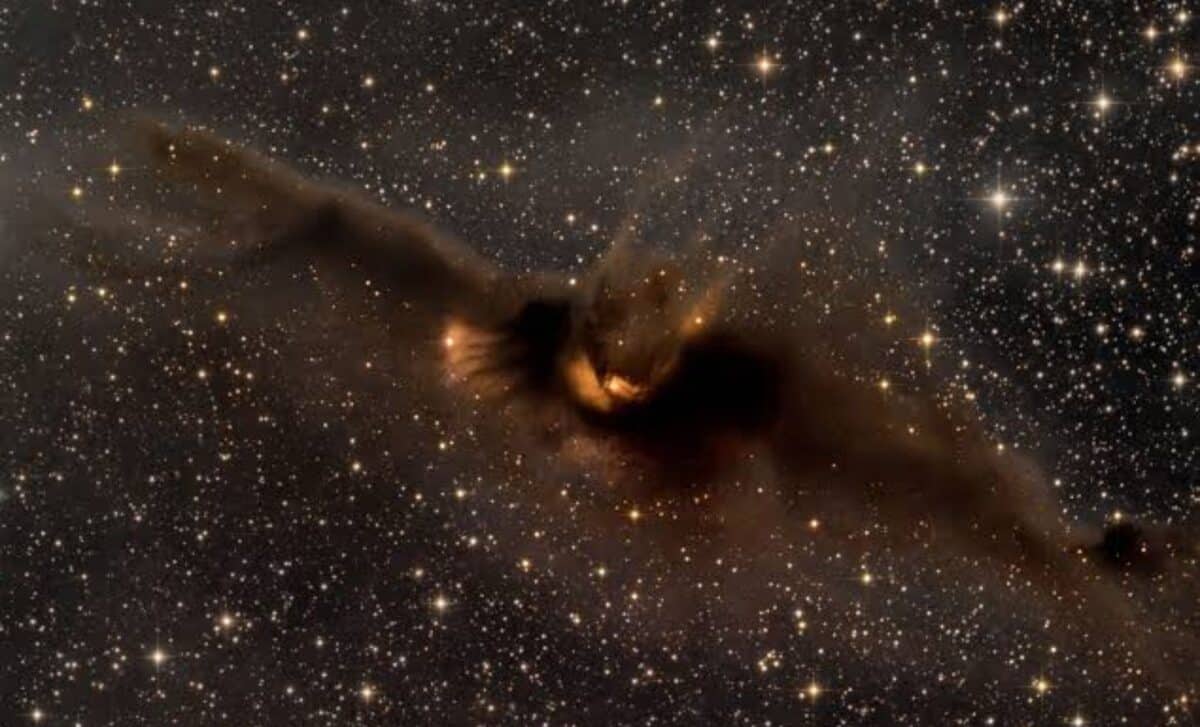A colossal cloud of gas and dust resembling a flying bat has been photographed soaring across the southern sky by the Very Large Telescope Survey Telescope (VST) in Chile. The eerie formation was revealed just in time for Halloween, its glowing red wings stretching over a swath of sky four times the size of the full Moon, according to the European Southern Observatory (ESO).
This eye-catching nebula, located approximately 10,000 light-years away between the Circinus and Norma constellations, forms part of an active star-forming region. It emits a vivid red hue due to ionized hydrogen gas, illuminated by the powerful radiation of newborn stars embedded within the cloud.
Owned and operated by the Italian National Institute for Astrophysics (INAF) and hosted at ESO’s Paranal Observatory in the Atacama Desert, the VST is equipped with OmegaCAM, a state-of-the-art 268-megapixel camera. Its large field of view allowed astronomers to capture this complex and expansive structure, which has no official name but clearly evokes the silhouette of a bat mid-flight.
Red Glow And Dark Filaments Mark A Stellar Nursery
The bat-shaped formation is more than a striking shape in the sky, it is a stellar nursery, a region where stars are actively being born. Within this nebula, newborn stars emit enough energy to ionize surrounding hydrogen gas, producing the intense red glow visible in the image.
Dense filaments of dust thread through the nebula, blocking background starlight and forming what appears to be the creature’s skeletal frame. According to ESO, these structures are denser and colder than their surroundings, making them prime locations for star formation.
 A bat-shaped cloud of gas and dust was captured in visible light by the VST in Chile. Credit: ESO/VPHAS+ team/VVV team
A bat-shaped cloud of gas and dust was captured in visible light by the VST in Chile. Credit: ESO/VPHAS+ team/VVV team
RCW 94 And RCW 95 Anchor The Cosmic Silhouette
The nebula includes two primary cloud regions identified in the RCW Catalog of bright star-forming zones in the southern sky. RCW 94 forms what observers see as the right wing of the bat, while RCW 95 shapes its body. The other features that complete the outline do not carry official designations but contribute to the bat-like appearance visible in the image.
These named regions help astronomers locate and study specific portions of the vast molecular cloud. As reported, this image was created by layering observations taken through different filters that isolate various wavelengths of light.
Astronomers Tap Open Data To Expose Stellar Nursery
The image comes from two big sky surveys: VPHAS+, which maps the southern part of the Milky Way in visible light, and VVV, which uses infrared to see through thick clouds of space dust. Both projects are open to anyone, scientists and the public alike, so people can dig into the data and explore these kinds of cosmic scenes for themselves.
The instruments behind the image, OmegaCAM and VISTA, do more than just create beautiful space pictures. According to the teams running the surveys, the data they’re collecting is helping researchers learn more about how stars are born and how our galaxy is built.

